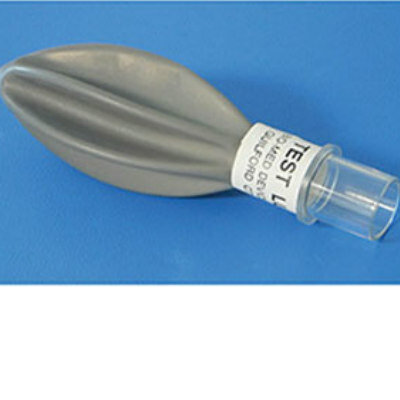Machine Learning Improves Postpartum Hemorrhage Risk Prediction
|
By HospiMedica International staff writers Posted on 13 Nov 2021 |

Two new studies have demonstrated the utility of machine learning to predict clinical outcomes for postpartum hemorrhage (PPH).
The studies, were conducted by Sema4 (Stamford, CT, USA) in collaboration with clinicians from the Mount Sinai Health System (New York, NY, USA). Both studies leveraged insights from Centrellis, Sema4’s health intelligence platform that powers Sema4’s ongoing research to better understand and improve reproductive health. Sema4 chose to focus its advanced machine learning methods on PPH as the condition is the leading cause of maternal mortality globally. PPH accounts for around a third of maternal deaths and often occurs in patients with no known risk factors for hemorrhage. In addition, limitations in diagnostic guidelines and risk assessment tools can make it difficult for healthcare providers to adequately identify and treat PPH, particularly in patients without evident symptoms.
The first study leveraged de-identified longitudinal electronic medical record (EMR) data on over 70,000 pregnancy deliveries at five Mount Sinai Health System hospitals to develop and validate a comprehensive digital phenotyping algorithm for PPH. The novel algorithm incorporates not only cumulative blood loss but also other critical diagnostic and treatment-related features indicative of PPH.
“PPH is a devastating condition which occurs with little advance warning. Current guidelines primarily rely on cumulative blood loss as the main diagnostic marker for PPH,” said Li Li, MD, SVP of Clinical Informatics at Sema4 and joint corresponding author. “We identified additional clinical features from EMR data, enabling us to identify PPH with 89% accuracy, whereas the standard blood loss-based definition was only 67% accurate. Thus, we anticipate that our digital phenotyping algorithm will be of significant use for tracking outcomes and clinical research to develop better preventative interventions for PPH.”
The same patient cohort was used in the second study to build, train, and validate a predictive model for PPH risk using advanced machine learning methods. The model uses 24 predictive markers, including five new potential PPH risk factors. These risk factors are readily obtained from routine lab tests, including complete blood count panels and vital signs, but are not currently utilized in standard risk assessment tools. The research also identified inflection points for laboratory and vital sign values where PPH risk rose substantially, which could serve as a guideline for monitoring intrapartum risk. In comparison tests, Sema4’s novel tool outperformed three existing clinical risk-assessment tools and models.
“In our studies, we established a physician-validated, comprehensive digital phenotyping tool for PPH using EMR data from a large US health system. We then used this validated phenotype to assess longitudinal antepartum and intrapartum data to build a robust predictive model for PPH risk after hospital admission,” added Dr. Li. “Our model identified clinical feature thresholds that can guide intrapartum monitoring with near-immediate clinical utility. Compared to current clinical standards of abnormal vital signs and laboratory parameters in the antepartum and intrapartum periods, we detected values for these 24 markers that could provide early warning signals to healthcare providers to monitor patients at risk. Following further evaluation, our predictive tool may enable reproductive healthcare providers to predict and treat potential high-risk symptoms before they occur, allocate resources appropriately, and ultimately reduce PPH morbidity and mortality.”
Related Links:
Sema4
Mount Sinai Health System
Latest Patient Care News
- Revolutionary Automatic IV-Line Flushing Device to Enhance Infusion Care
- VR Training Tool Combats Contamination of Portable Medical Equipment
- Portable Biosensor Platform to Reduce Hospital-Acquired Infections
- First-Of-Its-Kind Portable Germicidal Light Technology Disinfects High-Touch Clinical Surfaces in Seconds
- Surgical Capacity Optimization Solution Helps Hospitals Boost OR Utilization

- Game-Changing Innovation in Surgical Instrument Sterilization Significantly Improves OR Throughput
- Next Gen ICU Bed to Help Address Complex Critical Care Needs
- Groundbreaking AI-Powered UV-C Disinfection Technology Redefines Infection Control Landscape
- Clean Hospitals Can Reduce Antibiotic Resistance, Save Lives
- Smart Hospital Beds Improve Accuracy of Medical Diagnosis
- New Fast Endoscope Drying System Improves Productivity and Traceability
- World’s First Automated Endoscope Cleaner Fights Antimicrobial Resistance
- Portable High-Capacity Digital Stretcher Scales Provide Precision Weighing for Patients in ER
- Portable Clinical Scale with Remote Indicator Allows for Flexible Patient Weighing Use
- Innovative and Highly Customizable Medical Carts Offer Unlimited Configuration Possibilities
- Biomolecular Wound Healing Film Adheres to Sensitive Tissue and Releases Active Ingredients
Channels
Critical Care
view channel
CPR Guidelines Updated for Pediatric and Neonatal Emergency Care and Resuscitation
Cardiac arrest in infants and children remains a leading cause of pediatric emergencies, with more than 7,000 out-of-hospital and 20,000 in-hospital cardiac arrests occurring annually in the United States.... Read more
Ingestible Capsule Monitors Intestinal Inflammation
Acute mesenteric ischemia—a life-threatening condition caused by blocked blood flow to the intestines—remains difficult to diagnose early because its symptoms often mimic common digestive problems.... Read more
Wireless Implantable Sensor Enables Continuous Endoleak Monitoring
Endovascular aneurysm repair (EVAR) is a life-saving, minimally invasive treatment for abdominal aortic aneurysms—balloon-like bulges in the aorta that can rupture with fatal consequences.... Read more
Wearable Patch for Early Skin Cancer Detection to Reduce Unnecessary Biopsies
Skin cancer remains one of the most dangerous and common cancers worldwide, with early detection crucial for improving survival rates. Traditional diagnostic methods—visual inspections, imaging, and biopsies—can... Read moreSurgical Techniques
view channel
Robotic Assistant Delivers Ultra-Precision Injections with Rapid Setup Times
Age-related macular degeneration (AMD) is a leading cause of blindness worldwide, affecting nearly 200 million people, a figure expected to rise to 280 million by 2040. Current treatment involves doctors... Read more
Minimally Invasive Endoscopic Surgery Improves Severe Stroke Outcomes
Intracerebral hemorrhage, a type of stroke caused by bleeding deep within the brain, remains one of the most challenging neurological emergencies to treat. Accounting for about 15% of all strokes, it carries... Read moreHealth IT
view channel
Printable Molecule-Selective Nanoparticles Enable Mass Production of Wearable Biosensors
The future of medicine is likely to focus on the personalization of healthcare—understanding exactly what an individual requires and delivering the appropriate combination of nutrients, metabolites, and... Read moreBusiness
view channel
Philips and Masimo Partner to Advance Patient Monitoring Measurement Technologies
Royal Philips (Amsterdam, Netherlands) and Masimo (Irvine, California, USA) have renewed their multi-year strategic collaboration, combining Philips’ expertise in patient monitoring with Masimo’s noninvasive... Read more
B. Braun Acquires Digital Microsurgery Company True Digital Surgery
The high-end microsurgery market in neurosurgery, spine, and ENT is undergoing a significant transformation. Traditional analog microscopes are giving way to digital exoscopes, which provide improved visualization,... Read more
CMEF 2025 to Promote Holistic and High-Quality Development of Medical and Health Industry
The 92nd China International Medical Equipment Fair (CMEF 2025) Autumn Exhibition is scheduled to be held from September 26 to 29 at the China Import and Export Fair Complex (Canton Fair Complex) in Guangzhou.... Read more














